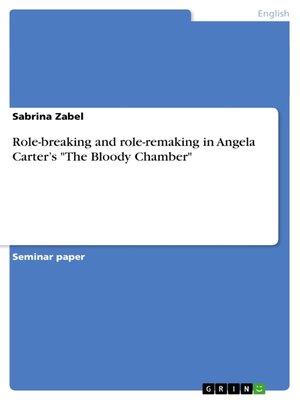
Sign up to save your library
With an OverDrive account, you can save your favorite libraries for at-a-glance information about availability. Find out more about OverDrive accounts.
Find this title in Libby, the library reading app by OverDrive.



Search for a digital library with this title
Title found at these libraries:
| Library Name | Distance |
|---|---|
| Loading... |
The attainment of female subjectivity in spite of female sexual maturation, the oppression of female sexuality, the passive role of females bound in the confines of marriage, and as accumulated property are some of the issues that Carter addresses in The Bloody Chamber within the framework of the fairytale genre. Angela Carter adopts Perrault's fairy-tale Bluebeard in her story The Bloody Chamber and transfers it into a feminist rewriting. She breaks through the prescribed role-understanding of women and men in society. Society defines women as being passive, men as being active in every domain of the everyday life. Angela Carter draws a picture against this stigmatization. She does not define women as being merely subversive; victims of male authority and simply fulfilling their role. She wants to show that women have the ability to gain independence and a free will by giving male qualities to her female characters or letting them not behave like society expects them to behave. In society men are said to be powerful and oppressing their wives. They show true qualities of masculinity and exploit their wife's innocence and naivety. Carter on the one hand portrays men as embodying this prescribed role, but also adds female qualities to their actions and behaviours, or being overpowered by their female counterparts. This paper shall show in how far Angela Carter adapts constructed role models, changes them or invents new ones. Therefore the paper is divided into two sections: The first gives a brief overview about the time period as this text is written against the background of the gothic era. The second part concentrates on The Bloody Chamber, which is first of all based on Perrault's Bluebeard story - to realize the differences to the original and understand their functions with the help of the before described background knowledge. Afterwards, an analysis of each character in the story should make clear the concept of Carter's role-breaking and role-remaking.







